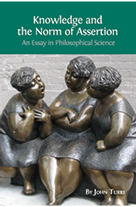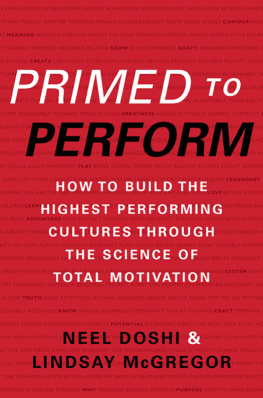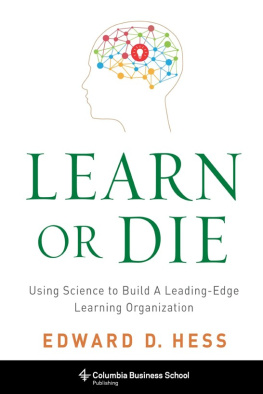
TO OUR PARENTSBHANU AND JOE, AND ELIZABETH AND IANFOR TEACHING US THE TRUE MEANING OF PLAY AND PURPOSE.
TO OUR MENTORS AND FRIENDS WHO HAVE BEEN EXTREMELY GENEROUS WITH THEIR TIME AND SUPPORT. WE HOPE WE CAN PAY IT FORWARD.
TO ALL THE PEOPLE WHOSE TOMO WE UNWITTINGLY DESTROYED OVER THE YEARS. AT LEAST WE LEARNED SOMETHING FROM IT!
Contents
Guide
It feels like the magic is fading, a senior executive of a prestigious international company explained after hed summoned us to help rebuild its culture. He knew that culture is critical to successand over 90 percent of business leaders agree. But he didnt know how to build a great culture. He didnt know how to prove that culture mattered. And he didnt know where to begin.
This executive wasnt alone. We hear similar concerns from leaders across businesses, nonprofits, school systems, and governments. While most people agree that culture is important, building great cultures still feels like magic that only a gifted few are born knowing how to practice.
We wrote Primed to Perform to reveal the science behind the magic. Over the last two decades, we built upon a century of academic study with our own original research. We analyzed tens of thousands of workers, from programmers, consultants, teachers, and investment bankers to frontline employees in legendary cultures like Southwest Airlines, the Apple Store, and Starbucks. We found that the magic behind great cultures is actually an elegantly simple science. Since then, weve tested this science around the world, from the Americas to the Middle East to Asia. In each case we found that what it takes to create the highest performing cultures is actually predictable.
Through this science we can systematically build and maintain the highest performing cultures. While culture was once soft and fuzzy, we can now measure the strength of a culture to determine where its weak and where its strong. Most importantly, weve developed a set of approaches and tools that help leaders build their own legendary cultures where people are primed to perform.
THE SCIENCE OF PERFORMANCE
Its remarkable how little it can take to enhance or destroy workplace performance. Imagine that it is eight oclock on a Monday morning. Youre at work, trying to read a fax (people do still send them). Somehow it was garbled in transmission, and you can make out only some of its text.

Take a moment. Can you figure out what the words are?
The first word is advantage. The second is inspire. And then knowledge. How long did it take you to figure out?
Now imagine that your coworkers are talking all around you, creating a soft background buzz. Could their conversations improve your ability to perform, or would they distract you? Subliminal priming experts conducted an experiment in which test subjects were asked to complete a set of word puzzles like the one above. While they worked in small empty rooms, tape-recorded voices murmured quietly in the background.
For the sake of clarity, lets call one test subject Amy and the other Steve. Test subject Amy and her group heard unintelligible chatter. Test subject Steve and his group heard the same thing, but it was followed by one minute of real conversation in which the speaker described how much he enjoyed an activity hed just completed.
The result? Steves group solved an average of 7 percent more problems than Amys did. They were 13 percent faster, and they stuck with an impossible problem for 14 percent longer. All after hearing just one minute of a specially scripted conversation.
Even more amazing, Steve didnt report hearing that conversation at all. None of the test subjects did. The volume was so low, and they were so focused on the puzzles, that the voices didnt penetrate their conscious minds. But their unconscious minds took note. The overheard voices primed them, unconsciously influencing them to work better, faster, and harder.
What if you could make every single person in your organization solve problems 10 percent better, 10 percent faster, and with 10 percent more persistence?
You can. But before you go and rig your workplace (or your childs bedroom) with hidden loudspeakers, keep reading. Primed to Perform isnt about mind control. Tricks dont work over the long haul. Primed to Perform shows you how to build a genuinely great culture.
Culture is like the background conversation that neither Steve nor Amy reported hearing. It surrounds you, but it is invisible, hidden in plain sight. You cant escape it. If just one minute of priming can boost Steve and his groups performance, imagine the impact of a culture that has been systematically designed to maximize the performance of every person at every level.
To build a high-performing culture, you must first understand what drives peak performance in individuals. The answer sounds deceptively simple: why you work affects how well you work.
In the case of this priming experiment, the overheard conversation put the idea of play into Steves head. Playwhen you do something simply because you enjoy the activityis the most powerful motive for working. As you will learn in the next chapter, there are six basic motives behind peoples work. Play, purpose, and potential strengthen performance. Emotional pressure, economic pressure, and inertia weaken it. When a culture maximizes the first three and minimizes the last three, it has achieved the highest levels of a phenomenon called total motivation (also known as ToMo). Part I of this book introduces you to this science.
Part II of the book examines what we mean by performance. Many leaders forget that there are actually two types of performance, both important yet mutually opposed. Most organizations manage tactical performancethe ability to execute against a plan. But adaptive performancethe ability to diverge from a planis just as important. Because tactical performance and adaptive performance are opposites, they live in a tension that few leaders have learned how to balance.
Figure 1: Great cultures fuel total motivation, and total motivation fuels performance. Primed to Perform shows you how each step works.

In most organizations, the machinery of performance management, from dashboards to evaluations to compensation, is designed to maximize tactical performance. But a single-minded focus on tactical performance can cripple adaptive performance. In a world of extreme volatility, this misstep can be fatal.
Great leaders must also understand the biases and reflexes that get in the way of building great cultures. Part III turns the microscope on our knee-jerk reactions and mistakes.
Finally, in Part IV, we share a step-by-step guide to culture building, starting with the total motivation (ToMo) factor, a simple, easy, and highly predictive new measurement of the six motives that enables you to see where your culture is weak, where its strong, and where it needs to change.
The total motivation factor is the ultimate culture-building tool, the compass youve always needed to make sure your culture is heading in the right direction. It has enabled us to find data-driven answers to replace the folklore around questions like:
Next page










